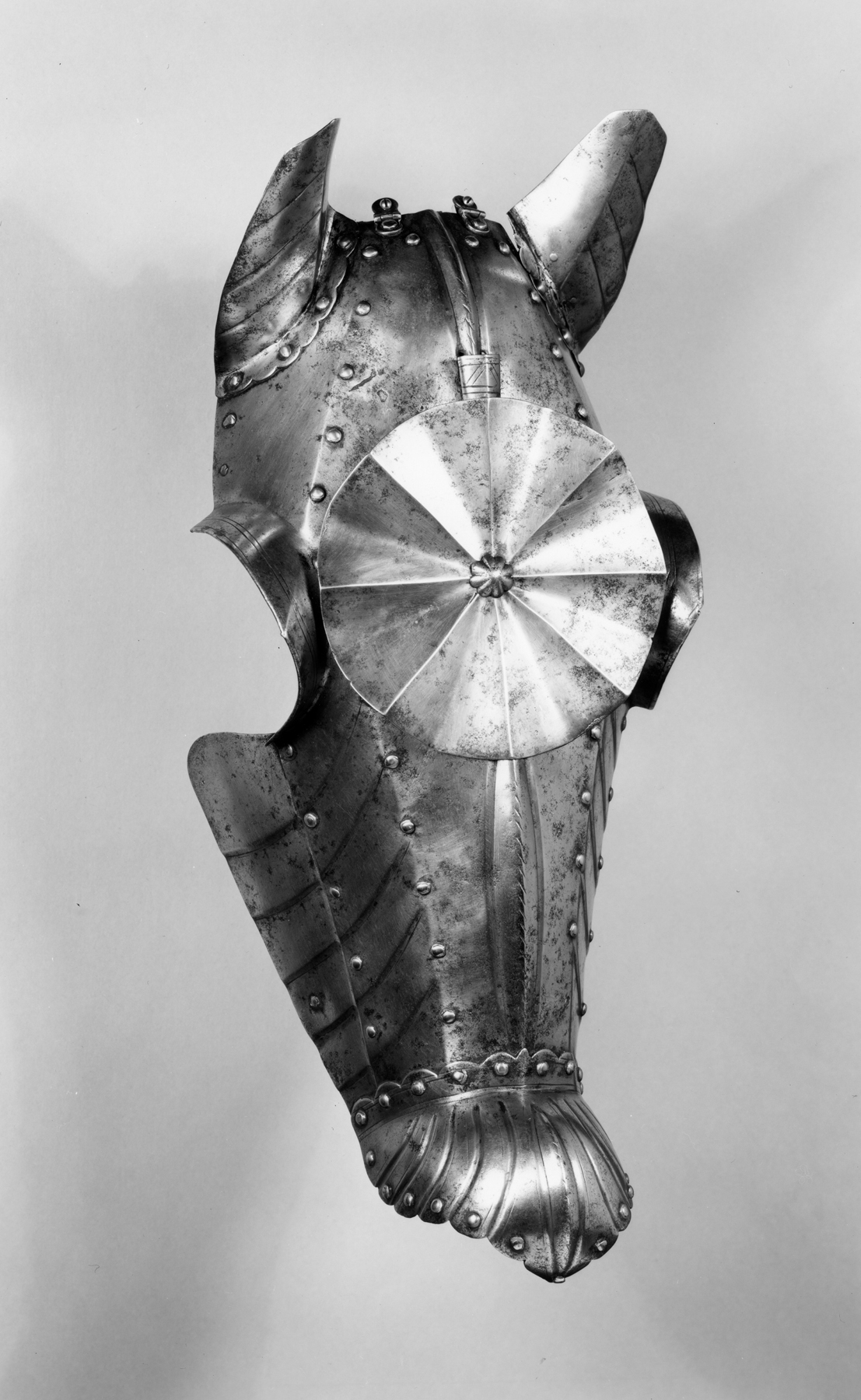Shaffron
Horses also needed protection from the enemy's weapons. By the mid-1400s, armorers had devised a near-complete set of armor to protect the steed in battle. Together these formed a bard. The head was covered by a shaffron (from chanfrein, French for the part of a horse's head from the ears to the nostrils). Attached side plates covered the horse's cheeks. The neck was covered by a crinet, the sides by flanchards, and the hindquarters by a crupper. The peytral covered the front of the horse's chest and sides around to the saddle. The legs were left free for easy movement.
Provenance
Provenance (from the French provenir, 'to come from/forth') is the chronology of the ownership, custody, or location of a historical object. Learn more about provenance at the Walters.
Baron de Cosson; Sir Edward Barry, bart., Ockswell Manor [date and mode of acquisition unknown]; Barry Sale, Sotheby, London, July 5, 1965, lot 32; Walters Art Museum, 1965, by purchase.
Exhibitions
| 1971-1972 | World of Wonder. The Walters Art Gallery, Baltimore. |
Geographies
Italy (Place of Origin)
Measurements
22 1/16 x 9 15/16 x 9 13/16 in. (56 x 25.2 x 25 cm)
Credit Line
Museum purchase with funds provided by the S. & A.P. Fund, 1965
Location in Museum
Accession Number
In libraries, galleries, museums, and archives, an accession number is a unique identifier assigned to each object in the collection.
In libraries, galleries, museums, and archives, an accession number is a unique identifier assigned to each object in the collection.
51.1368




